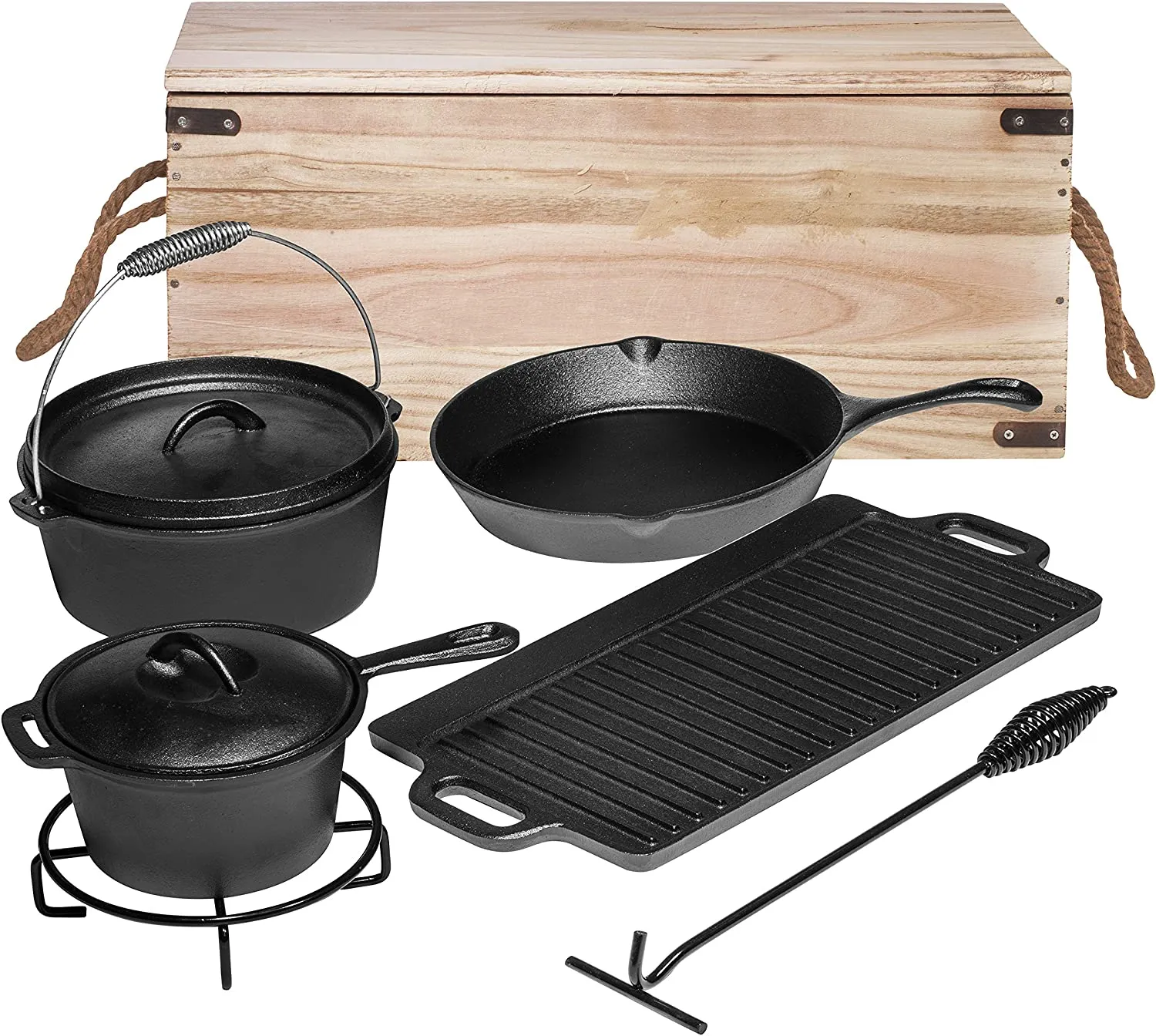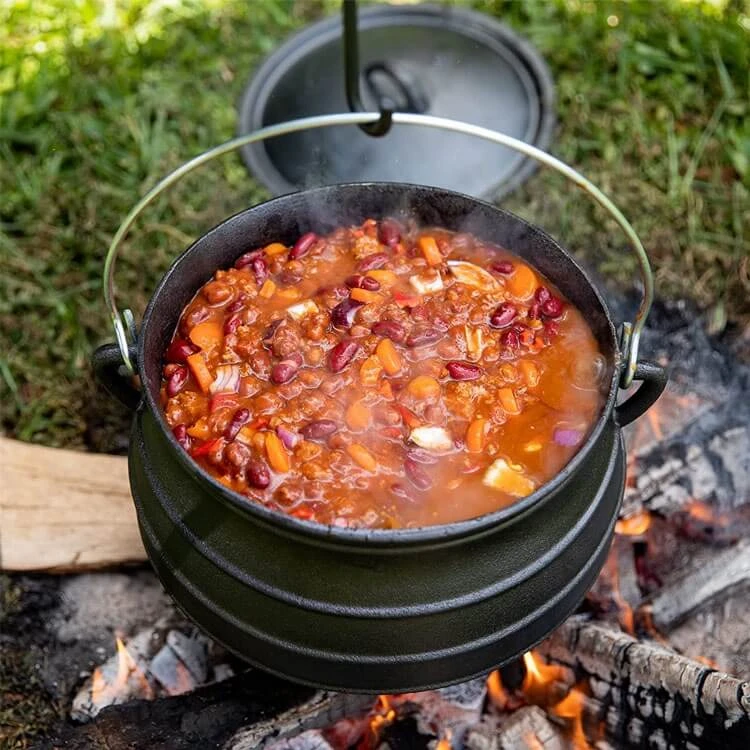
កុម្ភៈ . 02, 2025 04:13
Back to list
ENAMELED CAST IRON DUTCH OVEN POT, CASSEROLE DISH - ROUND RED 10.23" (26 CM)
Caring for your cooking tools is as vital as selecting the right ingredients for a recipe. Among the essential pots and pans in a cook's arsenal is the Dutch oven—a versatile and robust piece ideal for everything from stews to bread. However, maintaining its quality requires specific attention, especially when cleaning. Here's a detailed approach to cleaning a Dutch oven, based on professional culinary techniques and personal experience.
Salt Scrub Method For cast iron Dutch ovens, especially when dealing with minor rust issues, a salt scrub can be invaluable. Apply coarse kosher salt to the pot and scrub using a soft cloth or paper towel. This method will help eliminate rust and minor stains without compromising the integrity of the seasoning. Drying and Storage After cleaning, promptly dry your Dutch oven with a soft towel. Never leave it to air dry, particularly cast iron, as it can start to develop rust spots. For added protection, heat your Dutch oven on a stovetop at a low flame for a few minutes to ensure all moisture evaporates. Store your Dutch oven with the lid ajar, allowing air circulation to prevent moisture build-up, which can lead to rust. Re-seasoning Cast Iron If you've scrubbed your cast iron Dutch oven extensively, consider re-seasoning it. Preheat your oven to 375°F (190°C). Lightly coat the interior and exterior with a thin layer of vegetable oil or shortening, placing it upside down on the oven rack. After baking for an hour and allowing it to cool inside the oven, your Dutch oven should regain its seasoned sheen. Handling Enamel Chips For chipped enamel surfaces, it’s best to consult the manufacturer's warranty or seek professional advice. Continuing to use a chipped Dutch oven isn’t recommended, as the exposed iron can rust and the chips can potentially contaminate your food. Through diligent and informed care, your Dutch oven can last a lifetime, serving up countless meals without losing its quality or appearance. The expertise lies in understanding its material, committing to gentle cleaning practices, and knowing when to seek professional advice, ensuring trustworthiness in every culinary endeavor you undertake with this indispensable kitchen tool.


Salt Scrub Method For cast iron Dutch ovens, especially when dealing with minor rust issues, a salt scrub can be invaluable. Apply coarse kosher salt to the pot and scrub using a soft cloth or paper towel. This method will help eliminate rust and minor stains without compromising the integrity of the seasoning. Drying and Storage After cleaning, promptly dry your Dutch oven with a soft towel. Never leave it to air dry, particularly cast iron, as it can start to develop rust spots. For added protection, heat your Dutch oven on a stovetop at a low flame for a few minutes to ensure all moisture evaporates. Store your Dutch oven with the lid ajar, allowing air circulation to prevent moisture build-up, which can lead to rust. Re-seasoning Cast Iron If you've scrubbed your cast iron Dutch oven extensively, consider re-seasoning it. Preheat your oven to 375°F (190°C). Lightly coat the interior and exterior with a thin layer of vegetable oil or shortening, placing it upside down on the oven rack. After baking for an hour and allowing it to cool inside the oven, your Dutch oven should regain its seasoned sheen. Handling Enamel Chips For chipped enamel surfaces, it’s best to consult the manufacturer's warranty or seek professional advice. Continuing to use a chipped Dutch oven isn’t recommended, as the exposed iron can rust and the chips can potentially contaminate your food. Through diligent and informed care, your Dutch oven can last a lifetime, serving up countless meals without losing its quality or appearance. The expertise lies in understanding its material, committing to gentle cleaning practices, and knowing when to seek professional advice, ensuring trustworthiness in every culinary endeavor you undertake with this indispensable kitchen tool.
Previous:
Latest news
-
High Quality Cast Iron Pancake Crepe Pan - ZD Cookware | Durable, Non-Stick, Wooden HandleNewsJul.13,2025
-
High Quality Cast Iron Cookware - ZD Cookware|Durable Heat Retention&Non-Stick SurfaceNewsJul.13,2025
-
Cast Iron Pancake Crepe Pan-Durable Kitchenware-ZD CookwareNewsJul.13,2025
-
Premium Cast Iron Cookware ZD Cookware|Durable Non-Stick Wooden HandleNewsJul.13,2025
-
Durable Cast Iron Pancake Crepe Pan - Zhejiang ZD Cookware Co., Ltd.|Heat Retention,Durability,Non-Stick Surface,Versatile Cooking,Wooden HandleNewsJul.12,2025
-
High Quality Cast Iron Cookware - ZD Cookware | Black Pancake Pan, Non-Stick SurfaceNewsJul.12,2025


